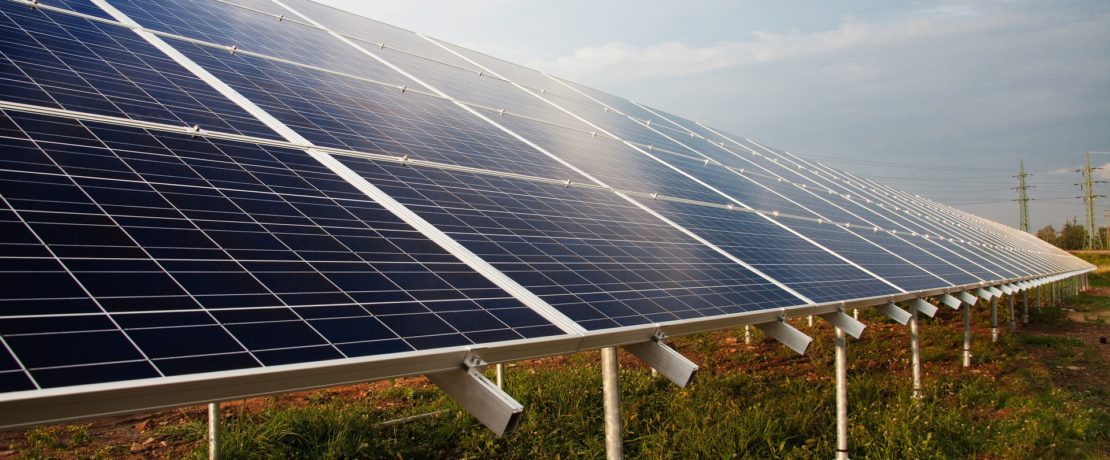Solar power in Bedfordshire
There are many competing demands for land use – whether it’s growing crops, rearing livestock, habitats for wildlife, countryside access or generating energy.
Here we explain CPRE Bedfordshire’s position on solar farms and the circumstances in which we would support and oppose planning applications.
Does CPRE Bedfordshire support solar power?
Yes. CPRE Bedfordshire is a strong advocate for the generation of electricity through a variety of both small and large scale Solar PV systems.
However, we wish to ensure that wherever possible Solar PV generating systems are located in the most appropriate locations, ensuring that environmental damage is kept to a minimum. For this reason, we support Solar PV Farms when they are situated on brownfield (previously used) land or on the poorest quality agricultural land, provided that they are not in the Chilterns Area of Outstanding Natural Beauty and do not have an unduly adverse impact on the surrounding landscape.
We support and encourage solar installations on the roofs of industrial and commercial buildings e.g., offices, factories, retail complexes and warehouses.
When would CPRE Bedfordshire object?
In our most recent objection, to a proposed solar farm near Clapham, we identified four key issues with the application. (You can download the full letter at the bottom of the page)
Best and Most Versatile agricultural land
At a time of Climate Change, it is vitally important that Best and Most Versatile (BMV) agricultural land is protected from development, since every square metre – every hectare, will be required to grow food for our population as Climate Change bites and weather systems become even more unpredictable, as we have seen in recent years.
The development of solar farms on BMV agricultural land is in conflict with current government guidance. The application also conflicts with the renewable energy policy in Bedford Borough Council’s Local Plan. The policy identifies specific impacts for solar energy schemes which include; ‘consideration of the impact on Best and Most Versatile agricultural land.’
Landscape and visual impact
The location for the proposed solar farm put forward in this application is in an area of open countryside near the village of Clapham. Public Rights of Way, adjacent to the perimeter of the field in question, run north to south on the west side of the field and in south easterly direction for a large part of the eastern side of the field. These footpaths are very popular with local residents who enjoy the rural setting and extensive views across agricultural land that would be hugely damaged by the installation of a solar farm. There is already an existing Solar PV installation only 500 metres to the west from the application site.

Alternative locations are available for large scale solar farms
There are a considerable number of very large warehouses along the A421 transport corridor, the roofs of which could easily be used as sites for large scale solar farms and for which the Government has provided “Permitted Development Rights” i.e. for which planning permission is not required.
Temporary planning permission period
The applicant is seeking temporary planning permission for a period of 50 years after which the applicant or the owners of the installation at that time, will be responsible for the removal of the Solar Farm and the restoration of the site to farming land.
50 years is equivalent to two generations and is far too long a time period – much can happen in terms of technological changes and improvements over such a timescale which could make the proposed Solar Farm completely uncompetitive.
The solar panels and other equipment on the Solar Farm have a maximum lifespan of between 10 and 20 years on average. It is quite common for the ownership of these Solar Farms to be sold on, often to companies registered offshore which are very secretive and difficult to contact. This would leave the public purse to pick up the cost of removal and disposal of the Solar Panels and other infrastructure and this could be extremely costly in the future.
A lifespan of 25 years should be the maximum period of Temporary Planning Permission and the applicant or owner of the Solar Farm installation should be required to lodge an Insurance Bond with the Local Planning Authority which would cover the costs of returning the site to agricultural land.

Read more
CPRE Bedfordshire letter re: CLAPHAM College Farm Green Lane 22.01581.MAF
CPRE Bedfordshire letter re: ASTWOOD STAGSDEN Solar Farm Application 21 02526 MAF This application has now been approved by Bedford Borough Council.
At our AGM in 2021 Brian Kerr spoke about his book ‘How to value a skylark’ which addresses some of the issues around land use and how we balance competing needs.







